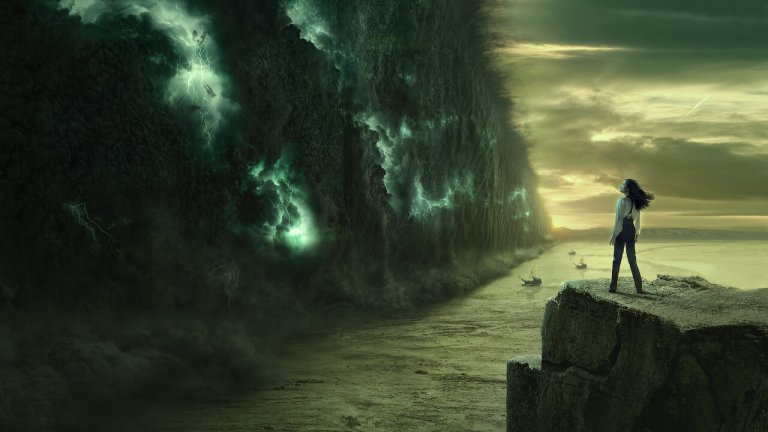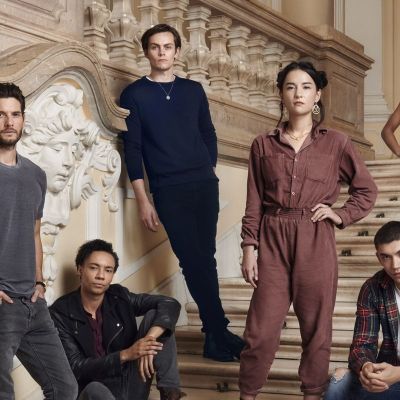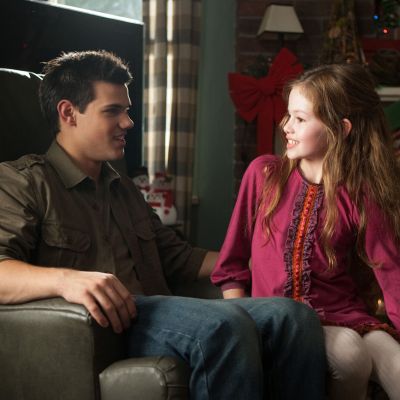Shadow and Bone Review: Netflix Adaptation Brings the Magic
No mourners. No funerals. Netflix’s adaptation of Leigh Bardugo’s bestselling fantasy novels will delight existing Shadow and Bone fans and newcomers alike.

This Shadow and Bone review contains no spoilers.
Millions of readers worldwide love young adult fantasy fiction, but even the most wildly popular titles—Sarah J. Maas’s Throne of Glass series, Cassandra Clare’s Shadowhunters books, Suzanne Collins’ The Hunger Games trilogy, and many more—are generally written off as “guilty pleasure” escapism, shallow, meaningless stories for people who just aren’t ready to take real literature seriously. (Barf.)
Part of this reaction likely stems from the widespread public backlash to the few young adult fantasy series to gain mainstream popularity, like the Twilight saga or the aforementioned Hunger Games. But, in truth, the dismissive attitude toward these stories most often feels like straight-up misogyny. After all, this is a genre that not only tends to be most openly appreciated by women but also one that unabashedly centers complex female characters in its stories. Often several of them at the same time!
Therefore, the arrival of Netflix’s Shadow and Bone is exciting enough for its own sake: It’s a propulsive story with great characters set in a fascinating, fully realized fantasy world. But it’s also something of a statement: That this sort of fiction—and the women who both champion and most frequently star in it—have an important place in the world of genre storytelling. And, thankfully, this is a series that more than lives up to the pre-release hype.
Leigh Bardugo’s bestselling Grishaverse novels are full of the sorts of details that tend to make for great fantasy television at its most basic level. There’s a war-torn kingdom battling both foreign enemies and an ever-expanding literal darkness, a complex system of magic that both empowers and alienates those who possess it from the bulk of society, and a girl looking for a place to belong who must ultimately claim her own power. (Quite literally in this case.)
In the kingdom of Ravka, elite magical soldiers known as Grisha can manipulate matter at its most fundamental levels, allowing their orders to control specific elements like fire (Inferni) and water (Tidemakers), solid objects like metal or textiles (Durasts), and even various aspects of the human body (Healers and Heartrenders).
The primary story of Shadow and Bone follows Alina Starkov (Jessie Mei Li), an orphaned soldier and map maker whose mixed-race heritage has often left her feeling out of place in the only country she’s ever known. (The decision to complicate Alina’s racial background is one made specifically for the Netflix series, by the way, and it’s a great choice.) But when her childhood best friend Malyen Oretsev (Archie Renaux) is named as part of a military unit ordered to cross the deadly Shadow Fold —literally a giant wall of darkness full of monsters that’s hundreds of miles wide—she unleashes a power she never realized she herself possessed. Alina, you see, is not just a Grisha, but a legendary Sun Summoner, whose powerful light-based magic could destroy the Fold forever.
Whisked off by the mysterious General Kirigan (Ben Barnes), the commander of Ravka’s Second Army—a.k.a. the one with all the Grisha in it—to learn to use her newfound abilities, Alina finds herself separated from Mal and everything she’s ever known. Thrust into a world she doesn’t understand and with powers she can’t entirely control, Alina will have to decide whether to trust Kirigan, with his equally rare shadow-based abilities and promises that they can change the world together.
The Netflix drama actually combines two of Bardugo’s book series into one—the fantasy adventure trilogy also titled Shadow and Bone, from which this adaptation takes its name and the bulk of its plot, and the more heist-oriented duology called Six of Crows. Since the latter technically takes place several years after the former, chronologically speaking, the Netflix series invents a prequel plot for key Six of Crows characters Kaz Brekker (Freddy Carter), Inej Ghafa (Amita Suman), Jesper Fahey (Kit Young), and Nina Zenik (Danielle Galligan) that ties them all more firmly into the main Shadow and Bone story.
If you’ve read Bardugo’s books, your mileage is likely to vary on how you feel about this choice. For the most part, it works, even if it takes several episodes for the Crows crew to feel like they aren’t having a completely different adventure on a totally different show. Jesper and Inej particularly benefit from the additional backstory provided here, and Galligan’s Nina is every inch as delightful as anyone might have hoped. Viewers who have not read Six of Crows may struggle to understand precisely what motivates Kaz, but his complicated relationship with Inej is almost compelling enough to make up for it.
In fact, one of the most striking elements of Shadow and Bone is the care it takes with all its central relationships—potentially romantic or otherwise. One of the criticisms most frequently leveled at popular YA fiction is that their stories are often flimsy excuses to create love triangles for fans to fight over. (See also: Gale/Katniss/Peeta, Edward/Bella/Jacob, etc.) But this series actually goes above and beyond in this department, adding a depth and nuance to Alina’s relationship with Mal that isn’t always present in the novel—and has nothing to do with romance. (Though, reader, I ship it a lot.) That same care and thoughtfulness is applied to pairings throughout the show’s canvas, and it’s truly wonderful to see.
Netflix has also clearly spared no expense in its creation of Bardugo’s fictional world, from the dense, crowded streets of Ketterdam to the magic-filled training grounds of Os Alta’s Little Palace. This is a universe that not only feels carefully thought out but fully lived in. Sure, Shadow and Bone might have done a better job of explaining the specifics about how these locations all relate to one another (Kerch is actually a separate country! West Ravka is not!) but it’s hard to be but so angry at something that generally feels like the pages of a beloved story come to life.
It’s true, Shadow and Bone is not a perfect adaptation of Bardugo’s novels. Several important secondary characters barely seem to merit a mention onscreen here (sorry, David Kostyk), and the rushed sequences at the Little Palace generally leave most of the secondary Grisha and their abilities feeling sadly interchangeable. And the series doesn’t always do the greatest job explaining the basics of Grisha life for casual viewers—I’m not sure it ever really spells out the differences between the various orders, nor does it go into tremendous depth about why things like Morozova’s stag exist. Yet, as a whole, the series feels often feels downright magical, a thrilling adventure that always remains firmly anchored in the story of the complex heroine at its center. Bring on Siege and Storm.


